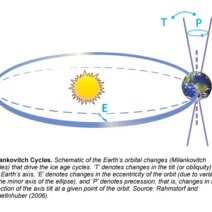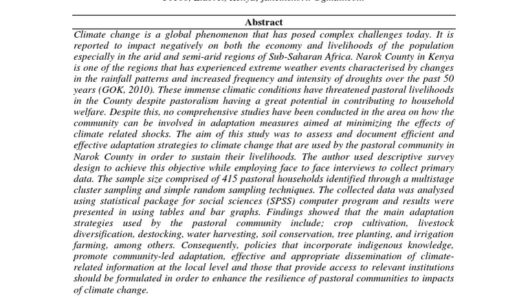Climate systems function much like an intricate tapestry, woven from the fibers of various interrelated phenomena. Each thread—be it the ozone layer, ocean currents, or atmospheric conditions—plays a pivotal role in maintaining the balance of our planet’s environment. When one strand frays, the implications reverberate throughout the entire fabric of Earth’s climate system, leading to distressing consequences, such as increased heatwaves.
The ozone layer, a fragile veil composed of ozone (O3) molecules, protects life on Earth by absorbing the majority of the sun’s harmful ultraviolet radiation. Its depletion has been compared to the gradual wearing away of a protective shield, leaving inhabitants vulnerable to an array of health risks and environmental degradation. As this protective layer diminishes, it alters the solar energy reaching the Earth’s surface, catalyzing a cascade of climatic alterations.
First, let’s explore the mechanisms of ozone depletion. Human activities have significantly contributed to the dissolution of this protective barrier, predominantly through the release of chlorofluorocarbons (CFCs) and other man-made chemicals. When these substances ascend into the stratosphere, they partake in photochemical reactions, ultimately leading to the disintegration of ozone molecules. This phenomenon serves as a harbinger of complexities ahead in the climate system.
The old adage, “What goes up must come down,” rings painfully true here. Depleted ozone allows more UV radiation to penetrate the atmosphere, which has far-reaching impacts on both ecosystems and human health. Increased UV exposure leads to higher incidences of skin cancers, cataracts, and compromised immune systems. But the outcomes are not confined to biological consequences; they extend to environmental disturbances as well.
As the delicate equilibrium of the Earth’s surface temperature is disrupted due to enhanced UV radiation, we witness alterations in weather patterns. Regions that were once temperate can experience unprecedented fluctuations, leading to extreme weather phenomena, including heatwaves. The interplay between sunscreen and heatwaves can be articulated as a paradox; while the ozone layer acts as a shield, increased temperatures attributable to its depletion exacerbate heat-related health issues and environmental stress.
The interconnection between ozone depletion and heatwaves is profound. Heatwaves are defined as prolonged periods of excessively high temperatures, often accompanied by humidity. These climatic events amplify as the climate warms, and research indicates a significant correlation between the thinning of the ozone layer and the frequency and intensity of heatwaves. The loss of ozone translates into altered atmospheric circulation, which subsequently influences temperature distribution across the globe.
This escalatory dynamic can be likened to a dominos effect; when one piece falls, the others inevitably follow. Ozone depletion accelerates temperature rise, which in turn increases the prevalence and severity of heatwaves, creating a feedback loop that intensifies climate extremes. The ramifications of this phenomenon extend into the realm of agriculture, which is significantly impacted by temperature anomalies. Prolonged heat can jeopardize crop yields, reducing food security and placing additional strain on already vulnerable populations.
Furthermore, the relationship between the land and the sea is crucial in understanding how these systems interact. Ocean currents, much like river systems within the climate tapestry, transport heat across vast distances. A warm ocean can directly influence atmospheric temperatures and conditions. Consequently, oceanic heat content plays a critical role in the occurrence of heatwaves. Warm waters evaporate more efficiently, releasing moisture into the atmosphere, which can lead to humidity-driven temperature spikes. This interplay between oceans and the atmosphere forms a vital conduit through which climate changes manifest.
The ramifications of these interactions extend beyond immediate humanitarian concerns. Ecosystems, particularly marine ecosystems, are profoundly affected by shifts in climate. Coral reefs, the rainforests of the sea, demonstrate acute sensitivity to elevated water temperatures and UV radiation. As these ecosystems struggle to adapt or survive under changing conditions, the implications cascade throughout marine biodiversity and the livelihoods that depend on them.
As society grapples with these multifaceted challenges, the urgency for mitigation strategies becomes paramount. Addressing ozone depletion requires concerted global efforts to curtail the use of ozone-depleting substances. The phasedown of CFCs under the Montreal Protocol is a commendable step forward, yet vigilance is essential. However, it is equally critical to address the broader aspects of climate change that masquerade as relentless adversaries to environmental stability.
In this context, resilience becomes a vital theme. Just as weaving a tapestry requires careful craftsmanship, building resilience in our climate systems involves multifaceted approaches, ranging from conservation to innovative technology. Transitioning to renewable energy sources, enhancing sustainable agricultural practices, and investing in urban green spaces are all integral components of fostering a healthier environment.
Ultimately, the interconnected nature of climate systems emphasizes that tackling these challenges requires a holistic perspective. The depletion of the ozone layer and the resulting proliferation of heatwaves are not isolated disturbances but are intertwined within a complex web of atmospheric dynamics and human influence. It is imperative to acknowledge these connections and take inspired action, for the health of our planet and future generations hinges upon our willingness to mend the frayed threads of our environmental tapestry.
In conclusion, the interaction of climate systems—from ozone depletion to heatwaves—illustrates the intricate and delicate balance that sustains life on Earth. Disruption in one area leads to repercussions that are as far-reaching as they are severe. By acknowledging our role in this narrative and striving for change, we can begin to restore harmony within this complex system. The time to act is not tomorrow; it is now.






